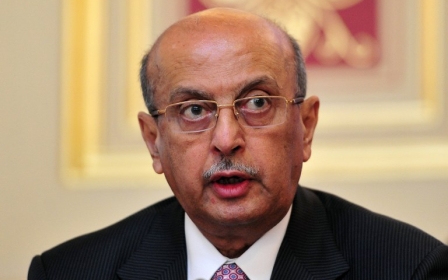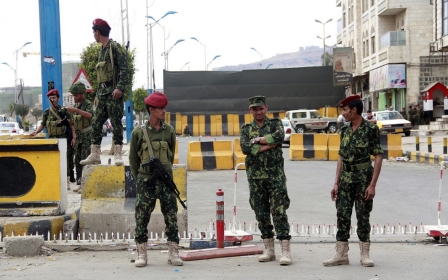Ceasefire agreed between Houthi rebels and government forces in Yemen

A ceasefire between Houthi rebels and government forces was announced by Yemeni authorities on Wednesday, after fierce fighting killed around 140 people from both sides in three days.
Fighters from northern Shia tribes have been battling government forces and members of the Sunni Islah Party in the central rovince of Amran for almost two months. This week, clashes killed around 114 Houthi rebels and 25 Yemeni soldiers, according to local officials.
The ceasefire, which came into effect at 12pm (9am GMT) on Wednesday, put an “immediate” end to all hostilities in Amran with “neutral” military monitors to be deployed in the area to supervise its implementation. A highway connecting Amran with the nearby capital city Sanaa will be reopened and military police will be charged with ensuring its security, according to state news agency SABA.
Rebel Houthi groups are said to be making attempts to expand their powerbase from mountainous northern areas toward Sanaa ahead of a federalisation plan they say will split the country into rich and poor areas. Houthis have been fighting government forces for years, complaining of marginalisation under former president Ali Abdullah Saleh, who was ousted in 2012 after months of mass protests.
At least 100 rebels and 20 soldiers were killed in fighting and government air strikes on Monday, according to deputy governor of Amran province Ahmed al-Bekry. A ceasefire was briefly struck on Tuesday, facilitated by the interior minister Abdou Hussein al-Tarb, but was broken within hours when Yemeni warplanes bombed rebel groups in Amran.
Five Yemeni army soldiers were killed by rebels in the hours before Wednesday’s ceasefire came into effect, with government forces responding with airstrikes killing at least 15 fighters, according to local tribal sources who spoke to the Reuters news agency.
This latest ceasefire came after rebel leader Abdul-Malik al-Houthi earlier pledged to release 100 soldiers held by his group.
“We are willing to cooperate in a manner that would serve security and stability,” he said on the Houthi affiliated al-Masirah television channel.
Al-Houthi said Amran should be put under the control of a “neutral” military force, instead of Battalion 310 who are currently deployed in the area and have led recent fighting against his rebel group.
Protests in the capital Sanaa on Wednesday backed up al-Houthi’s call, with thousands of people reportedly gathering to call for the head of Battalion 310 to be removed from his position.
Translated to English the tweet says "Thousands go out from the provinces of Sanaa to express solidarity with the revolutionaries of Amran, rejecting army aggression and demanding the resignation of the leader of 301 brigade."
Local commentators say practical changes are required if fighting is to be permanently brought to an end.
"The two warring parties are well armed and enmity between them is deeply rooted," said Shuaib Almosawa, a freelance journalist based in Sanaa who tweets from @shuaibalmosawa. "For the ceasefire to hold, the government needs to fulfil its commitments regarding addressing the grievances of the Houthi movement, as recommended by the National Dialogue Conference," he added.
"Islah affiliate officials, namely the commander of the 310 Bridage in Amran, as well as the governor of Amran, should be replaced with non-partisan ones. Unless those issues are addressed, you can expect a new round of fighting."
The Houthi movement has been around since 1992, based in the northern province of Saada and has engaged in several bouts of fighting with government forces since then that have left thousands dead.
Since the 2011 uprising, the army has struggled to regain nationwide control of Yemen, with the country facing a humanitarian crisis as well as fighting separatists and al-Qaeda linked groups in the south.
Middle East Eye propose une couverture et une analyse indépendantes et incomparables du Moyen-Orient, de l’Afrique du Nord et d’autres régions du monde. Pour en savoir plus sur la reprise de ce contenu et les frais qui s’appliquent, veuillez remplir ce formulaire [en anglais]. Pour en savoir plus sur MEE, cliquez ici [en anglais].




